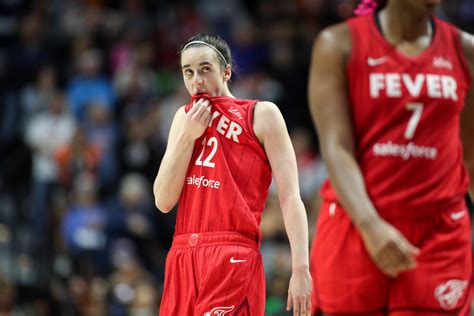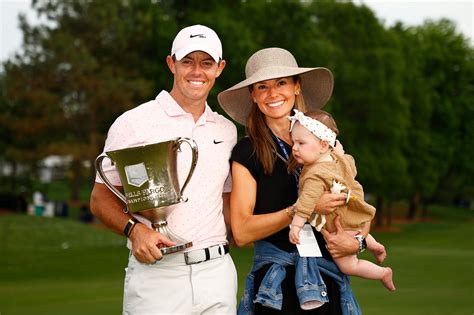
Paige Spiranac has addressed a viral video that sparked online discussion regarding a perceived wardrobe malfunction during a golf swing, clarifying the situation with humor and setting the record straight. The golf influencer and content creator took to social media to explain what actually happened and poke fun at the incident, highlighting the challenges of filming golf content while maintaining professionalism.
Paige Spiranac, a prominent figure in the world of golf and social media, found herself at the center of attention after a video she posted went viral, leading to speculation about a potential wardrobe mishap. In response, Spiranac directly addressed the situation, utilizing her platform to clarify the events and add her own lighthearted commentary. The incident underscores the difficulties and unique challenges faced by content creators, particularly women, in the sports industry.
Spiranac’s initial video, intended to showcase her golf swing, quickly gained traction, but not entirely for the reasons she anticipated. Viewers zoomed in and speculated that her top had shifted during the swing, potentially revealing more than intended. These comments rapidly spread across social media, prompting Spiranac to respond.
In her follow-up statement, Spiranac explained the situation with humor and transparency. “It’s always something,” she began, acknowledging the internet’s tendency to focus on minor details. She stated that while it may have appeared as a wardrobe malfunction in the video, it was simply the way her top moved during her swing. “For those of you who were concerned, I’m sorry to disappoint, but nothing was exposed,” she clarified, adding a playful tone to her explanation.
Spiranac also used the opportunity to comment on the broader issue of online scrutiny and the pressures faced by female athletes and influencers. “It’s tough because as a woman, anything you do, people are always going to pick it apart,” she said. She emphasized the importance of focusing on the content and the sport itself, rather than getting caught up in minor details or potential misinterpretations.
The incident highlights a recurring theme in the online world, where women in the public eye are often subjected to heightened scrutiny regarding their appearance and attire. Spiranac’s response serves as a reminder of the need for respectful and constructive engagement, rather than focusing on potentially misconstrued details. It also showcases her ability to navigate the challenges of online fame with grace and humor.
Background on Paige Spiranac
Paige Spiranac has cultivated a significant presence in the golf world, transitioning from a competitive golfer to a celebrated social media influencer and content creator. Her journey reflects the evolving landscape of sports media and the growing influence of online platforms.
Born on March 26, 1993, in Wheat Ridge, Colorado, Spiranac developed a passion for golf at a young age. She showed promise as a junior golfer, earning a scholarship to the University of Arizona and later transferring to San Diego State University. During her collegiate career, she achieved notable success, including All-Mountain West Conference honors.
Despite her achievements in college golf, Spiranac decided to pursue a different path after graduation. Recognizing the growing potential of social media, she began creating golf-related content on platforms like Instagram and YouTube. Her engaging personality, combined with her golf expertise, quickly attracted a large following.
Spiranac’s content typically includes instructional videos, course vlogs, and lifestyle updates. She often shares tips and advice for golfers of all skill levels, while also providing glimpses into her personal life. Her approachability and willingness to connect with her audience have been key factors in her success.
However, Spiranac’s rise to fame has not been without controversy. She has faced criticism for her sometimes provocative attire and the perception that her appearance overshadows her golf skills. Some traditionalists in the golf world have questioned her credibility, arguing that she is more of an influencer than a golfer.
Despite these criticisms, Spiranac has remained resilient and continued to build her brand. She has leveraged her platform to advocate for various causes, including anti-bullying initiatives and women’s empowerment in sports. She has also partnered with numerous brands, further solidifying her position as a prominent figure in the golf industry.
Spiranac’s success reflects the changing dynamics of sports media, where social media influencers are playing an increasingly important role. She has demonstrated the power of online platforms to connect with audiences and create new opportunities for athletes and content creators. While her approach may not appeal to everyone, her impact on the golf world is undeniable.
The Viral Video Context
The viral video in question was initially posted on one of Spiranac’s social media channels, presumably as part of her regular golf content. The video featured her demonstrating a golf swing, which is a common theme in her posts. However, it was the angle and the movement of her clothing during the swing that caught the attention of viewers.
As Spiranac swung the golf club, her top shifted in a way that some viewers interpreted as a wardrobe malfunction. This interpretation led to a flurry of comments and speculation, with many users zooming in and analyzing the video frame by frame. The video quickly spread beyond Spiranac’s immediate followers, reaching a much wider audience and generating significant buzz.
It’s important to note that the perception of a wardrobe malfunction was subjective. While some viewers were convinced that something had been exposed, others argued that it was simply the way the fabric moved during the swing. This ambiguity contributed to the video’s virality, as people debated and shared their opinions.
The incident highlights the challenges of creating content in the digital age, where even seemingly innocuous videos can be scrutinized and misinterpreted. It also underscores the importance of context and perspective. What might appear to be a wardrobe malfunction in a brief, decontextualized clip may be entirely different when viewed in the original context.
Spiranac’s Response in Detail
In response to the viral video, Paige Spiranac took a proactive approach, addressing the situation directly and humorously. Her response was multifaceted, encompassing clarification, commentary, and a broader reflection on the challenges faced by women in the public eye.
First and foremost, Spiranac clarified that there was no actual wardrobe malfunction. She explained that the perceived exposure was simply the result of how her top moved during the golf swing. By setting the record straight, she aimed to dispel any misconceptions and put an end to the speculation.
In addition to clarifying the facts, Spiranac also injected humor into her response. She acknowledged the internet’s tendency to focus on minor details and playfully apologized to those who were “disappointed” by the lack of any actual exposure. This lighthearted approach helped to diffuse the tension and prevent the situation from escalating further.
However, Spiranac’s response was not solely focused on the specific incident. She also used the opportunity to comment on the broader issue of online scrutiny and the pressures faced by female athletes and influencers. She pointed out that women in the public eye are often subjected to heightened scrutiny regarding their appearance and attire, and that this can be a significant challenge.
“It’s tough because as a woman, anything you do, people are always going to pick it apart,” she said, underscoring the constant pressure to maintain a perfect image. She emphasized the importance of focusing on the content and the sport itself, rather than getting caught up in minor details or potential misinterpretations.
Spiranac’s response resonated with many of her followers, who praised her for her grace, humor, and willingness to speak out on important issues. Her handling of the situation served as a reminder of the need for respectful and constructive engagement online, and the importance of not jumping to conclusions based on limited information.
The Impact of Social Media on Athletes and Influencers
The Paige Spiranac incident underscores the significant impact of social media on athletes and influencers, both positive and negative. Social media platforms have become essential tools for athletes to connect with fans, build their brand, and generate revenue. However, they also expose athletes to increased scrutiny, criticism, and the potential for viral controversies.
On the positive side, social media allows athletes to bypass traditional media outlets and communicate directly with their fans. They can share updates on their training, competitions, and personal lives, creating a sense of connection and intimacy. This direct engagement can help athletes build a loyal following and attract sponsorships.
Social media also provides athletes with a platform to advocate for causes they believe in. They can use their influence to raise awareness about social issues, promote charitable organizations, and inspire positive change. This can enhance their reputation and solidify their position as role models.
However, social media also presents significant challenges for athletes. The constant scrutiny and pressure to maintain a perfect image can be overwhelming. Athletes are often judged on their appearance, their personal lives, and their opinions, rather than solely on their athletic performance.
The potential for viral controversies is another major concern. A single tweet, post, or video can quickly spread across the internet, reaching millions of people and potentially damaging an athlete’s reputation. Even seemingly innocuous content can be misinterpreted or taken out of context, leading to backlash and criticism.
The Spiranac incident is a prime example of this phenomenon. A video of her golf swing, which was intended to be informative and entertaining, was quickly transformed into a source of controversy due to speculation about a wardrobe malfunction. This highlights the need for athletes to be extremely careful about what they post online, and to be prepared to respond to any potential criticism or misinterpretations.
Furthermore, the anonymity of social media can embolden trolls and harassers. Athletes are often subjected to abusive comments, personal attacks, and even threats. This can have a significant impact on their mental health and well-being.
To navigate the challenges of social media, athletes need to develop a strong sense of self-awareness, resilience, and strategic communication skills. They need to be able to manage their online presence effectively, protect their reputation, and prioritize their mental health. They also need to be prepared to deal with criticism and negativity, and to seek support when needed.
The Role of Media in Reporting Such Incidents
The media’s role in reporting incidents like the Paige Spiranac viral video situation is crucial, and it comes with a responsibility to balance newsworthiness with ethical considerations. Sensationalizing the event could exacerbate the scrutiny Spiranac faces, while ignoring it entirely would neglect a conversation about the challenges women face in the sports and media industry.
Responsible journalism involves reporting the facts accurately and providing context. It’s essential to explain what happened in the video, Spiranac’s response, and the broader implications for female athletes and influencers. The focus should be on the issues raised, such as online scrutiny and the pressure to maintain a perfect image, rather than simply dwelling on the perceived wardrobe malfunction.
Media outlets should also be mindful of the language they use. Avoid sensationalized headlines or descriptions that perpetuate harmful stereotypes or contribute to the objectification of women. Instead, use neutral and objective language that accurately reflects the events.
It’s also important to give Spiranac a voice in the reporting. Allow her to share her perspective and explain her side of the story. This ensures that her voice is heard and that the reporting is fair and balanced.
Furthermore, media outlets should consider the potential impact of their reporting on Spiranac’s mental health and well-being. Sensationalizing the incident or focusing on negative comments could exacerbate the stress and pressure she is already facing. Responsible journalism involves being sensitive to these concerns and avoiding any actions that could cause further harm.
The media also has a role to play in promoting respectful online engagement. By highlighting the negative consequences of online scrutiny and harassment, they can encourage viewers to think critically about their own behavior and to engage in more constructive and supportive online interactions.
In conclusion, the media’s role in reporting incidents like the Paige Spiranac viral video situation is crucial, and it comes with a responsibility to balance newsworthiness with ethical considerations. Responsible journalism involves reporting the facts accurately, providing context, using neutral language, giving Spiranac a voice, considering the potential impact on her mental health, and promoting respectful online engagement.
Frequently Asked Questions (FAQ)
-
What exactly happened with Paige Spiranac’s viral video?
The video, which featured Spiranac swinging a golf club, sparked online speculation about a potential wardrobe malfunction. Some viewers believed her top shifted during the swing, revealing more than intended. Spiranac later clarified that it was simply the way her top moved and that there was no actual exposure.
-
How did Paige Spiranac respond to the viral video?
Spiranac responded with humor and transparency, clarifying that there was no wardrobe malfunction and playfully apologizing to those who were “disappointed.” She also used the opportunity to comment on the broader issue of online scrutiny and the pressures faced by female athletes and influencers.
-
Why did the video go viral in the first place?
The video went viral because of the ambiguity surrounding the perceived wardrobe malfunction. Viewers debated whether something had been exposed, leading to widespread speculation and sharing. The incident also touched on broader issues of online scrutiny and the objectification of women, which resonated with many people.
-
What are the broader implications of this incident for female athletes and influencers?
The incident highlights the challenges faced by female athletes and influencers in the digital age. They are often subjected to heightened scrutiny regarding their appearance and attire, and they must navigate the potential for viral controversies and online harassment. This underscores the need for respectful online engagement and a focus on content and skills rather than superficial details.
-
How has Paige Spiranac used social media to build her brand?
Spiranac has leveraged social media to connect with fans, share her golf expertise, and build her brand. She creates engaging content, including instructional videos, course vlogs, and lifestyle updates. Her approachability and willingness to connect with her audience have been key factors in her success. She has also partnered with numerous brands, further solidifying her position as a prominent figure in the golf industry.
In-Depth Analysis and Expanded Context
The Paige Spiranac incident serves as a microcosm of the broader challenges and opportunities presented by social media in the sports world. It’s a case study in how a seemingly innocuous piece of content can be amplified and distorted by the internet, leading to both scrutiny and support. To fully understand the significance of this event, it’s crucial to delve deeper into the various factors at play, including the evolving role of social media in sports, the unique pressures faced by female athletes, and the ethical considerations for media reporting.
The Evolution of Social Media in Sports
Social media has fundamentally transformed the landscape of sports, altering the way athletes connect with fans, build their brands, and generate revenue. In the past, athletes relied primarily on traditional media outlets – newspapers, television, and radio – to communicate with the public. However, social media has given athletes the ability to bypass these intermediaries and engage directly with their fans, creating a more personal and interactive experience.
This direct engagement has several benefits. First, it allows athletes to control their own narrative. They can share their thoughts, feelings, and experiences in their own words, without having to worry about being misquoted or misrepresented by the media. This can be particularly valuable for athletes who have been unfairly criticized or misunderstood.
Second, social media allows athletes to build a stronger connection with their fans. They can respond to comments, answer questions, and share behind-the-scenes glimpses of their lives, creating a sense of intimacy and connection. This can foster greater loyalty and support, which can translate into increased ticket sales, merchandise purchases, and sponsorship opportunities.
Third, social media provides athletes with a platform to promote their personal brand. They can showcase their skills, personality, and values, attracting attention from potential sponsors and endorsements. This can be a significant source of revenue, particularly for athletes who compete in niche sports or who are not yet established stars.
However, the rise of social media in sports also presents significant challenges. The increased scrutiny and pressure to maintain a perfect image can be overwhelming. Athletes are constantly being judged on their appearance, their personal lives, and their opinions, rather than solely on their athletic performance.
The anonymity of social media can also embolden trolls and harassers. Athletes are often subjected to abusive comments, personal attacks, and even threats. This can have a significant impact on their mental health and well-being.
The Paige Spiranac incident is a prime example of these challenges. She has built a successful career by leveraging social media to connect with fans and promote her golf skills. However, she has also faced criticism and scrutiny for her appearance and her sometimes provocative content. The viral video incident highlights the fine line that athletes must walk in order to maintain a positive online presence while also remaining authentic and true to themselves.
The Unique Pressures Faced by Female Athletes
Female athletes face a unique set of pressures in the sports world, often encountering greater scrutiny and fewer opportunities than their male counterparts. These pressures are amplified by social media, where female athletes are often judged more harshly on their appearance and their personal lives.
One of the key challenges is the objectification of female athletes. They are often portrayed as sex symbols rather than as skilled competitors, with media coverage focusing on their looks rather than their athletic achievements. This can be demoralizing and can undermine their credibility as athletes.
Another challenge is the pressure to conform to traditional gender roles. Female athletes are often expected to be feminine, demure, and subservient, even though these qualities may be at odds with the demands of their sport. This can create a sense of internal conflict and can limit their ability to express themselves authentically.
The Paige Spiranac incident highlights these challenges. She has faced criticism for her sometimes provocative attire, with some arguing that it detracts from her golf skills. However, she has also defended her right to express herself and to choose her own style, arguing that she should not be judged solely on her appearance.
The Ethical Considerations for Media Reporting
The media plays a crucial role in shaping public perceptions of athletes and sports. Therefore, it’s essential that media outlets adhere to ethical standards when reporting on incidents like the Paige Spiranac viral video situation.
One key consideration is the balance between newsworthiness and privacy. While the public has a right to know about newsworthy events, the media must also respect the privacy of individuals and avoid sensationalizing or exploiting personal information.
Another consideration is the potential for harm. Media coverage can have a significant impact on the mental health and well-being of athletes, particularly when it is negative or critical. Therefore, media outlets should be mindful of the potential consequences of their reporting and avoid any actions that could cause further harm.
It’s also important to avoid perpetuating harmful stereotypes. The media has a responsibility to portray athletes in a fair and accurate light, avoiding any language or imagery that could reinforce negative stereotypes about gender, race, or other characteristics.
In the Paige Spiranac incident, some media outlets have been criticized for sensationalizing the event and focusing on the perceived wardrobe malfunction rather than on the broader issues of online scrutiny and the pressures faced by female athletes. This highlights the importance of responsible journalism and the need for media outlets to prioritize ethical considerations over sensationalism.
The Future of Social Media in Sports
Social media is likely to continue to play an increasingly important role in sports in the years to come. As technology evolves and new platforms emerge, athletes will have even more opportunities to connect with fans, build their brands, and generate revenue.
However, it’s also important to be aware of the potential challenges. The increased scrutiny and pressure to maintain a perfect image will likely continue, and athletes will need to develop strategies for managing their online presence effectively.
It’s also crucial to address the issue of online harassment and abuse. Social media platforms need to take steps to create a safer and more respectful environment for athletes, and individuals need to be held accountable for their online behavior.
By addressing these challenges and promoting ethical behavior, social media can be a powerful tool for empowering athletes and promoting the growth of sports. The Paige Spiranac incident serves as a reminder of both the potential and the pitfalls of social media in sports, and it underscores the need for responsible and thoughtful engagement.
Conclusion
The Paige Spiranac viral video incident is a complex and multifaceted event that reflects the evolving dynamics of social media, sports, and gender. It highlights the challenges and opportunities faced by female athletes in the digital age, and it underscores the need for responsible media reporting and ethical online engagement. By understanding the various factors at play, we can learn valuable lessons about the power and the pitfalls of social media, and we can work towards creating a more inclusive and supportive environment for athletes of all backgrounds. Spiranac’s ability to navigate the controversy with humor and clarity showcases her resilience and understanding of the social media landscape. Her experience is a valuable case study for athletes and influencers as they navigate the complexities of online presence and public perception.









